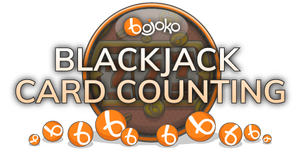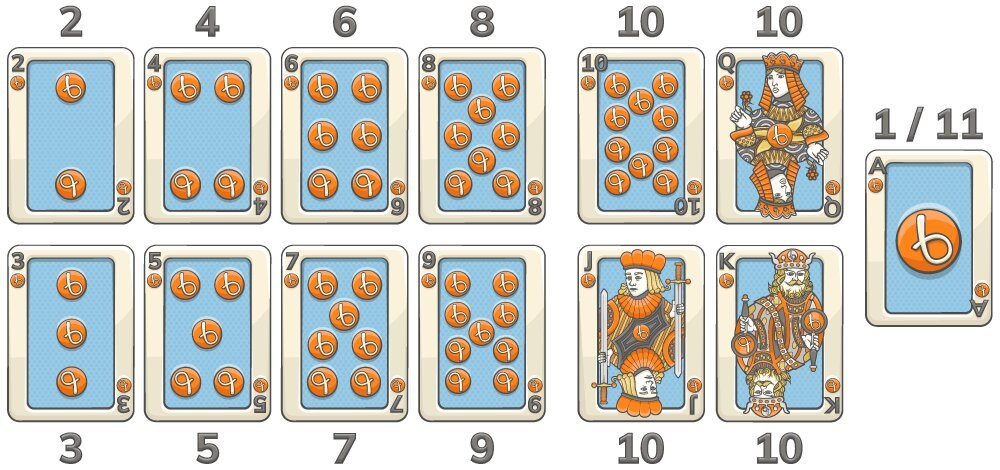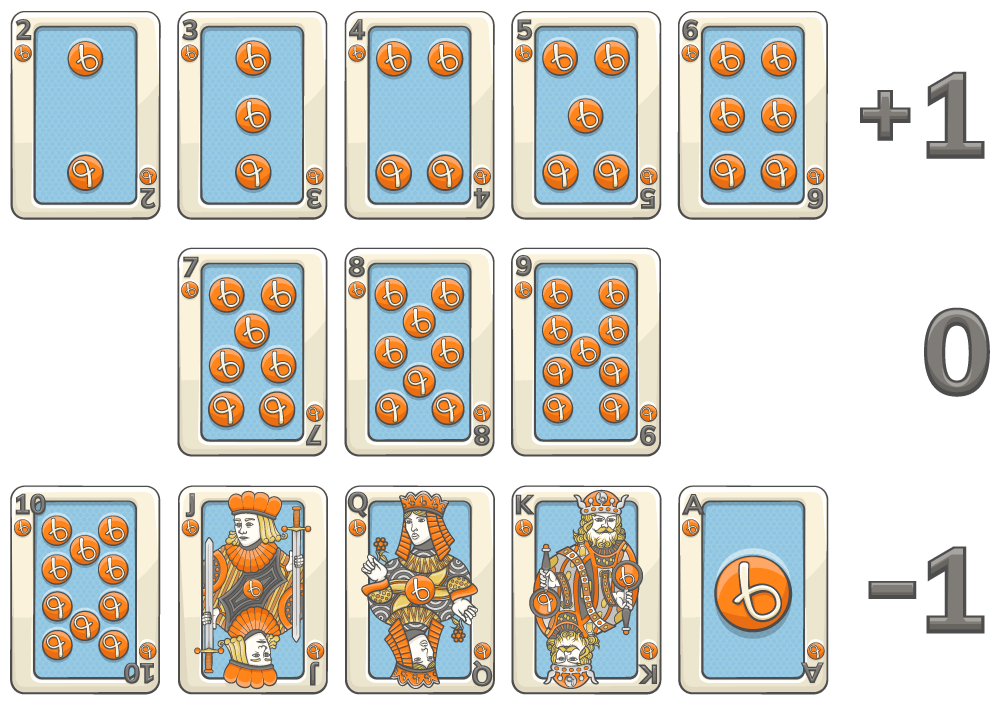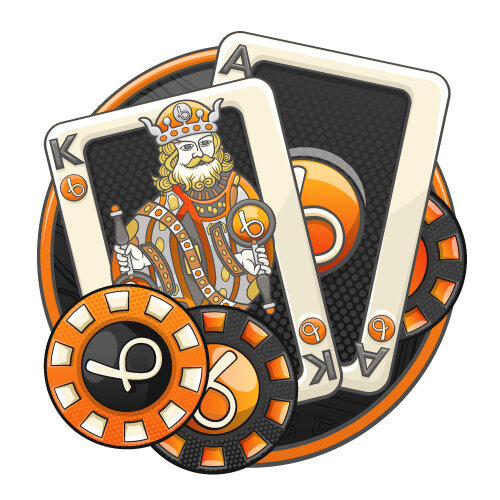Learn how to count cards in blackjack. Counting cards is a skill you can learn to become a better blackjack player.
Here on Bojoko, we will teach you how to count cards, what different counting strategies are available and how to use that skill on an actual blackjack table.
Card counting gives you a better chance of winning and can even turn the odds in your favour.

Card counting is a process where you keep track of the cards played so you know what is left in the deck. You don't count individual cards but rather keep track of the number of high and low-value cards that have been played.
Blackjack card counting is a way for the player to improve their chances. A good card counter can take the casino's edge and turn it around. With practise, a skilled card counting blackjack shark can gain up to a 3% edge over the casino.
Card counting is perfectly legal, but casinos frown upon it. If a player is suspected of counting cards, they will be stopped, barred from playing in the card rooms or even banned from the entire casino where that is possible. Casinos have countermeasures to prevent counting and will actively keep an eye out for card counters.
But before you start counting cards, you should first learn how to play blackjack. Check out our how to play online blackjack page for a comprehensive guide.
The history of card counting as we know it today dates back to the late 1950s and early 1960s. This was the post-war boom years and when Las Vegas became the epicentre of American gambling.
When gambling became an everyday thing, people wanted to get good at it and beat the casino. While most games were purely random, blackjack gave the player some control. Mathematicians and mathematically inclined gamblers realised that they could count the cards played to know what values were left in the deck and knew how this affected the gameplay.
Edward O. Thorp is considered the father of modern card counting. His book, Beat the Dealer, goes over the betting strategies for optimal play. Over the years, casinos have taken more countermeasures, and many of Thorp's practices are no longer applicable. The core for card counting was there, even if it was rudimentary.
Players like Joe Bernstein, Harvey Dubner, Roger Baldwin, Wilbert Cantey, Herbert Maisel, and James McDermott all created or improved the techniques to beat the casino and let players gain the edge. Methods like Hi-Lo counting were introduced, and concepts of true count for multiple decks were helping perfect the strategies.
Most of the basic concepts of modern card counting were invented early on. The later years have been more about honing the actions, and casinos and players one-upping each other with countermeasures and counter-countermeasures.
To start counting cards, you need to know the blackjack card values.
Here are the values of different cards:

Card value is the key factor in card counting. You need to keep track of how many low, medium and high cards have been played so you know what is likely to come next.
If the deck has a lot of small cards left, it is better for the casino. A deck full of high cards gives you more blackjacks, which pay out more, and the dealer is likelier to go bust when hitting a high card.
Losing to a dealer's blackjack is a 1:1 loss, but winning with a blackjack pays 3:2. This way, even an equal number of blackjacks for you and the dealer is positive for you.
When counting, a deck with a lot of low values is called a cold deck, and a deck with high cards is a hot one. The term cold deck is also used for a stacked deck which is allegedly used when players are running hot.
Hi-Lo card counting is the most common card counting method for blackjack and the easiest to learn. It keeps a count of high and low-value cards that have been played.
Simply put, when a low card is shown, you add 1 to your count, and when a high card is shown, you take away 1. At the end of a single deck, your total should always be 0.
If your running total is high at any point, you can tell that the deck has more high cards left, and you should bet more. If the total is low, then you bet less or even walk away.
You should learn the basic strategies before going too deep into card counting. You can read about them on our basic blackjack strategy page.

Hi-Lo count is based on the following rules:
The Hi-Lo card counting strategy is known as a "balanced system" where the sum of all cards in a 52-card deck is 0.
EXAMPLE: You're dealt 10 and 7; the dealer is showing a 6. You stand, the dealer reveals an Ace, and you push. What's the count?
The running count is the raw number you get when you count the cards over multiple hands. It does not take into account the number of decks used; it just counts the high and low cards.
Doing a running count means that you start counting the played cards and keep track of the numbers that have come up so far. This is something you can practice by doing card counting drills.
It is better to get a running count going immediately after a casino picks up a new shoe. Then the count is going to be more accurate. Missing out on a half-a-deck's worth of cards can make your running count inaccurate from the actual state of the shoe.
The true count is the total running count divided by the number of decks used. It adjusts the score to what it would be if you only used a single deck.
The true count is used in some strategies when deciding what actions to take at what point of the game.
Using advanced counting systems that are based on the Hi/Lo counting can give you even better results.
These strategies may be more difficult to remember and use but can lead to what some call the perfect blackjack strategy.
If you are already good with Hi-Lo counting, you can give these systems a try. They increase the difficulty but also improve your bottom line.

Here are some other blackjack card counting systems than Hi-Lo. Some of these are even easier to learn.
Other counting systems are often unbalanced, meaning the final count of a 52-card deck is not zero. What makes things easier is that true count is not necessary with them.
Key Card Count was designed by Fred Renzy, and it counts only a handful of cards.
This is an unbalanced system, and the total sum of a deck is +2.
You start the count when the deck is shuffled at +18. When you spot a 4 or a 5, add one to your count, and when you see a 10 or a black ace, reduce your count by one.
Based on the count:
The Red 7 Count was created by Arnold Snyder, and this system counts the following cards:
This is also an unbalanced system with a total sum of +2 for each deck.
You start your count at -2 for every deck in the shoe. So, if you use 6 decks, you start at -12.
When the score reaches zero or goes to a positive number, you should raise your bets. At this point, the deck is favourable to the player.
Card counting is different in online blackjack and land based casinos. The basic skills are the same, but how you use them differs.
The important thing to know is if card counting is even possible. Regular RNG online blackjack shuffles the deck after every hand, which makes counting pointless. A land-based casino may also use continuous shuffling machines, which work the same way. Always avoid these tables.
Land-based casinos will be noisy places with a lot of distractions. This will make focusing on your count difficult. It is also possible that the dealer will actively try to engage you in conversation to mess you up if they suspect you are counting.
If you can handle the distractions and even chat while counting, land-based casinos are better places to use your card-counting skills. They go through more cards without shuffling, or in other words, penetrate the shoes deeper. This makes your count more accurate. On the other hand, if a casino suspects that you are counting cards, they will most likely throw you out.
The best thing is to find a good casino from our blackjack sites page and head to their live casino table. There, you can count cards in peace.
You can practise card counting here on Bojoko with our blackjack simulator and card counting drill.
You can check the card counting drill and try counting on our free blackjack simulator.
Card counting is a skill, and just like every other skill, you can practise it. The more you do it, the better you become at it. And we have created the tools for you to do just that.
Practise your running count first, and then test your skills on an actual free-play blackjack simulator. This simulator is designed for practising card counting and will not continuously shuffle the deck.
If you want to practise on your phone or tablet, you can download our free app.
There are pros and cons of card counting in online blackjack. Below, you can see if online card counting is good for you.
✅ You can use physical tools and software to help you
✅ No one is trying to distract your count
✅ You can't be thrown out for counting cards
❌ Counting against RNG blackjack is impossible
❌ Live dealer casino deck penetration is low
❌ Some live casinos still use continuous shuffling machines which can't be counted